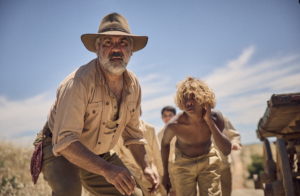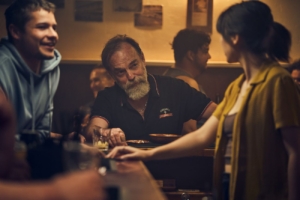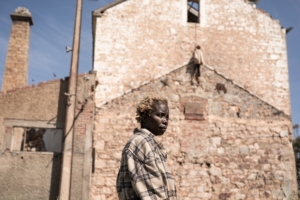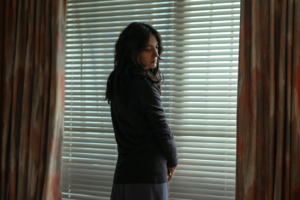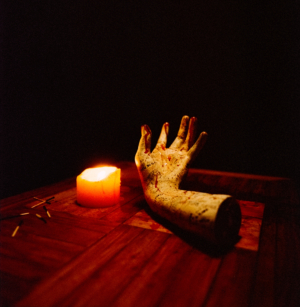Faced with the dwindling popularity of its horror villains in the 1930s and 1940s, Universal Pictures decided that, if Count Dracula, Frankenstein’s monster and the Wolf Man[1]These characters are from Dracula (Tod Browning, 1931), Frankenstein (James Whale, 1931) and The Wolf Man (George Waggner, 1941), respectively. could no longer scare people, then maybe they could make them laugh. And so, in a bit of brand-building betraying the Barnumesque spirit of early Hollywood – and showing that, contrary to popular thinkpiece hand-wringing, modern marketing stunts like AVP: Alien vs. Predator (Paul WS Anderson, 2004) aren’t symbols of Hollywood’s inexorable decline – Universal matched its classic horror stable with another studio cash cow: Bud Abbott and Lou Costello Meet Frankenstein (Charles T Barton, 1948). It marked the end of the golden era of early horror movies – with once-feared icons of fright rendered as comic fodder – the symbolism lingering in the fact that Barton’s film featured Bela Lugosi’s final performance as the famous caped count, the last gasp of an iconic career that was to careen into its Ed Wood epilogue. But, just as Abbott and Costello closed the door on the original horror era, it opened another, ushering in the modern horror-comedy.
New Zealand’s What We Do in the Shadows (Jemaine Clement & Taika Waititi, 2014) is one such film, with a postmodern twist: it’s a mockumentary steeped in the creaky tropes of reality television. But it’s certainly not new – for as long as cinema has had bloodsuckers (on screen, that is; off-screen bloodsucking is a veritable trade in business-as-usual Hollywood), there have been those deploying them to comic effect; whenever vampire films come in vogue, a rash of comedies inevitably follows. In the exploitation-rich swinging sixties and onwards, that meant films of varying prestige – from cheap-and-nasties like Carry on Screaming! (Gerald Thomas, 1966) and The Vampire Happening (Freddie Francis, 1971), to bizarre exercises in genre helmed by art-cinema icons, such as The Fearless Vampire Killers (Roman Polanski, 1967) and Blood for Dracula (Paul Morrissey, 1974), the last of which was initially released as Andy Warhol’s Dracula. Following the box-office boon of teen horror in the 1980s and the vast success of Anne Rice’s ‘The Vampire Chronicles’ books, there came another rush of vampire parodies – from teen-coms like Once Bitten (Howard Storm, 1985) and Vampire’s Kiss (Robert Bierman, 1988), to gag-a-minute movies riffing on the genre’s ridiculous beginnings like Transylvania 6-5000 (Rudy De Luca, 1985) and Dracula: Dead and Loving It (Mel Brooks, 1995); even the once-wild realm of blaxploitation wasn’t immune, as seen in films like Vamp (Richard Wenk, 1986) and Vampire in Brooklyn (Wes Craven, 1995). With the all-conquering might of the Twilight (2008–2012) phenomenon turning the undead into an industry in the 2000s, there have been a run of increasingly flimsy and witless titles – Vamps (Amy Heckerling, 2012), Vampires Suck (Aaron Seltzer & Jason Friedberg, 2010), Vampire Academy (Mark Waters, 2014) and the genuinely regrettable Transylmania (Scott and David Hillebrand, 2009) – that each offer a dire portrait of current vampiric cinematic ‘satire’.
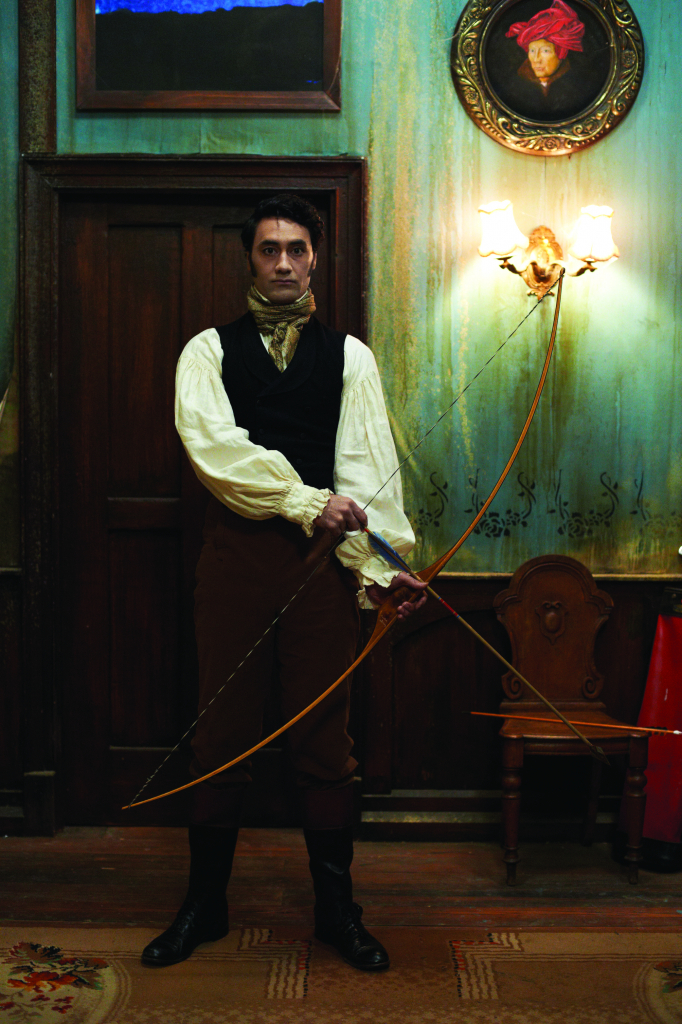
Compared to many of the above films, which have the desperate movie-biz air of money-laundering to them, What We Do in the Shadows stands apart. It comes from two of new-millennial New Zealand’s most beloved comic players: Clement, one half of the duo from the buddy musical Flight of the Conchords; and Waititi, a filmmaker whose two prior pictures, Eagle vs Shark (2007) and Boy (2010), have done well at the box office at home and found cult audiences abroad. They first worked together on Eagle vs Shark, in which Clement stars as the leading man in a tale of misfits in love, and, given the fondness for deadpan humour that Clement and Waititi share, the mockumentary – which requires actors to deliver punchlines with a straight (oblivious) face while a smirking, knowing audience watches on – is a welcome genre. It’s not the first film of its kind, however; What We Do in the Shadows is predated by the Belgian mockumentary Vampires (Vincent Lannoo, 2010), which uses the same premise – and many of the same comic conceits – by blending vampiric lore with domestic scenarios. Lannoo’s film finds comic incongruity in playing out the most familiar of nuclear-family foibles in the realm of the undead. What We Do in the Shadows has a variation on that theme: it’s about a sharehouse in modern-day Wellington with vampire inhabitants.
In the film, Waititi stars as Viago, a 379-year-old fop fond of cravats, ruffled shirts and neatness, while Clement plays Vladislav, an 862-year-old former medieval torturer and once-all-powerful vampire whose command over unsuspecting victims has lessened considerably over time. Their characters split the rent with Deacon (Jonathan Brugh), a 183-year-old cad who bristles at domestic responsibilities and keeps his human lackey, Jackie (Jackie Van Beek), at his beck and call, and 8000-year-old Petyr (Ben Fransham), who’s less the assimilated vampire and more the terrifying monster from beyond the pale. In What We Do in the Shadows, we see these vampires argue over who has disobeyed the ‘chore wheel’, whether that be forgetting to take out the recycling or leaving the sink full of bloody dishes. But the film’s initial portrayal of squabbling, Real World–esque housemates soon pulls back to a bigger picture, looking at how these vampires interact not just with one another, but also with those in the outside world of mundane Wellington. In their constant hunt for blood, the gang often lean on Jackie – strung along by Deacon’s promise of eternal life – to recruit willing victims for in-house dinner parties. Other times, they head out on the town: a classic gang of lads out on the pull. Having no reflection, it’s tough getting trussed up for a night on the tiles – the vamps have to rely on sketches or pantomimes by the others, instead of mirrors, to gauge the sartorial qualities of their much-ruffled outfits. Soon, though, they’re riding the bus to Wellington central, hoping that club bouncers will invite them inside, in keeping with vampire lore. The essential comic tone is that of a fish out of water, but there’s never any sense that our flatmates are symbolic in their Otherness.
For as long as cinema has had bloodsuckers (on screen, that is; off-screen bloodsucking is a veritable trade in business-as-usual Hollywood), there have been those deploying them to comic effect; whenever vampire films come in vogue, a rash of comedies inevitably follows.
Vampire lore has long been used as a way of taking the pulse of public panic. Bram Stoker’s novel Dracula, published in 1897, tapped into the British Empire’s fear of polyglot cultures and the upper-class obsession with genetic sciences, becoming an epistolary literary exercise in racial profiling: the titular Slavic bloodsucker arrives on the virgin shores of England and taints the purity of Anglo-Saxon bloodlines with every bite. From there, the periodic pop-cultural return-to-favour of the vampire would align with new fears – symbolising the menace of invading Germany, the spectre of sexual libertarianism, the rise of queer culture, the scourge of AIDS. As social values shifted, these outsiders no longer represented a source of terror but rather a desirable, aspirational enclave that misfit kids could dream of escaping to – in The Lost Boys (Joel Schumacher, 1987), for instance, vampires finally meet their fate as charismatic teenage bad boys. By the time we get to Twilight, vampirism becomes less about moral decay and more about mortal salvation. The glittering white skin and teeth, flaxen locks, abundant wealth and promised immortality of the vampiric Cullen clan embodies the glories of the Mormon faith practised by the author of the novels on which the films are based. The yearning of Twilight’s human heroine (Kristen Stewart) for eternal love and life nods to needing a place among the flock. And the stalkerish ‘romance’ of its star-cross’d lovers obeys the Latter-day Saints laws of chastity and is eventually consecrated in a celestial marriage.
As What We Do in the Shadows takes place in contemporary New Zealand, it could have easily been loaded with, say, racial tensions, but instead it’s a broad portrait of how people from prior generations are forced to deal with increasingly digitised times. If there are hints of the popular panic of 2014, they’re regarding the internet era’s anxieties: less #FOMO, more Snowden. When the vampires are first introduced to the wonders of the web – selfies, Facebook, Google Images, Skype – they’re entranced by the endless possibilities. But the ever-encroaching presence of the surveillance state plays at the edges: being a murderous Lothario, a dandyish blade with a taste for blood, is a far more difficult task in an era of forensic profiling, closed-circuit cameras and citizen phone footage, not to mention with a documentary crew trailing your every move, set to reveal your secrets unto the world.
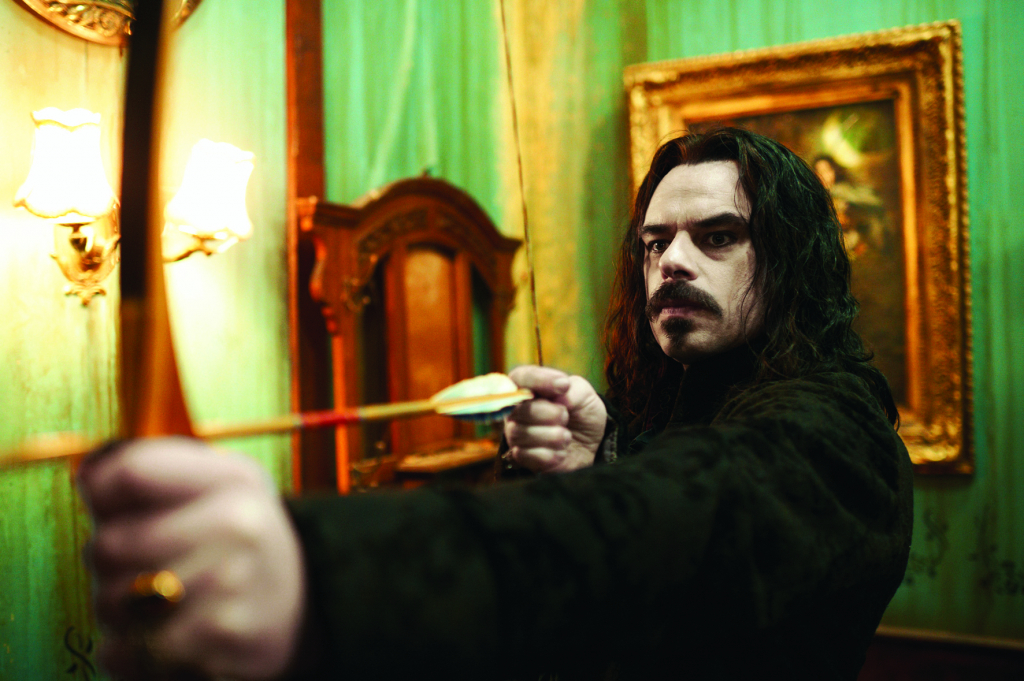
In the absence of measurable parable, the greater question is: does it really matter? Does a comedy need to have trenchant social commentary to ‘succeed’ as a piece of cinema? Or does it only need to make people laugh? Adam McKay’s Anchorman: The Legend of Ron Burgundy (2004) and Anchorman 2: The Legend Continues (2013) feel like totemic modern American comedies, their tonal incoherence hardly bothering those happy to quote their comic riffs. The films are so built around improv that they seem barely half-written, able to be easily recut into sister pictures – Wake Up, Ron Burgundy: The Lost Movie (2004) and Anchorman 2: Super-Sized R-Rated Version (2014), also directed by McKay – in which there are not only different jokes but new storylines as well.
As What We Do in the Shadows takes place in contemporary New Zealand, it could have easily been loaded with, say, racial tensions, but instead it’s a broad portrait of how people from prior generations are forced to deal with increasingly digitised times.
What We Do in the Shadows seems just as built around the improvising of its players, and, if the sole functional purpose of a comedy is to be funny, then it already succeeds. The laughs begin with the 1970s New Zealand Documentary Board logo shown in the film’s opening, but there are a bunch of other inspired ideas: alternate-history faux-newsreel images that show Hitler’s ‘secret vampire army’; a play on cop-on-duty reality shows, in which a pair of dull-eyed police officers remain oblivious to the supernatural events surrounding them; the idea of vampires doing their ‘dark bidding’ on eBay; old Flight of the Conchords pal Rhys Darby appearing as the leader of an eminently dorky pack of werewolves (‘Werewolves, not swearwolves,’ he exhorts his more recalcitrant charges); and the greater Wellington region’s annual Unholy Masquerade Ball taking place at the ‘Cathedral of Despair’ (a.k.a. the local bowls club).
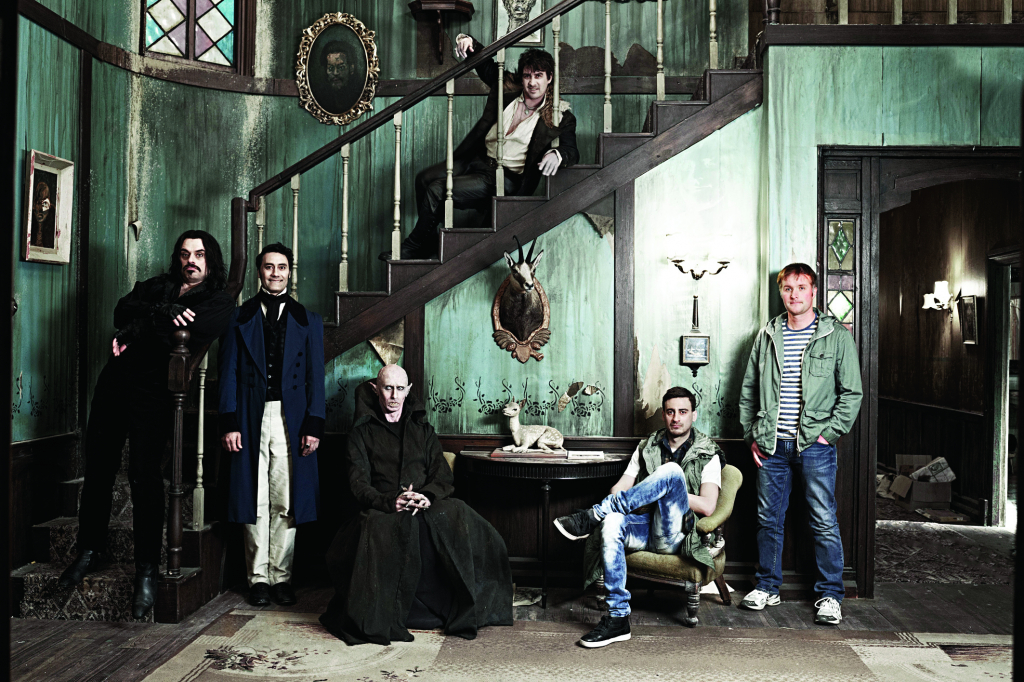
But the story’s central conflict comes when twenty-first century Nick (Cori Gonzalez-Macuer) is accidentally turned from victim into vampire (‘It was quite similar to the flu,’ he dully recounts, of the transformation, ‘the only difference being that I bled heaps from the eyes’). Nick brings a new presence – and a new viewpoint – into the house, disrupting the domestic balance. Significantly, he demands that he remain friends with his milquetoast old mate Stu (Stuart Rutherford, a crew member from Waititi’s past films who’s clearly not an actor, his natural awkwardness a strong fit for the mockumentary conceit), who, despite his rosy cheeks, is not to be used as food. Yet frustration soon brews as Nick grapples with his new state. ‘I’m over being a vampire. Don’t believe the hype!’ the frustrated new bloodsucker howls, lamenting the things – sunbathing, daytime television, eating chips – lost to his old life. Seeing Nick ungrateful causes Jackie, wising up to her status as doormat, to seethe with rage and rail against the ‘homoerotic dick-biting’ boys club of vampirism.
These moments are when What We Do in the Shadows is at its funniest and its most incisive. It’s a film built to mock the tired tropes of a genre and, when it sets its mind to it, it does so savagely. Waititi and Clement will surely wheel out that old saw of their film being a loving ‘homage’ to Dracula and his manifold cinematic minions, but those who hold tight to the edicts of vampires may not be as charmed as those who already find undead neck-biting an inherently silly premise.
http://whatwedointheshadows.com
Endnotes
| 1 | These characters are from Dracula (Tod Browning, 1931), Frankenstein (James Whale, 1931) and The Wolf Man (George Waggner, 1941), respectively. |
|---|

